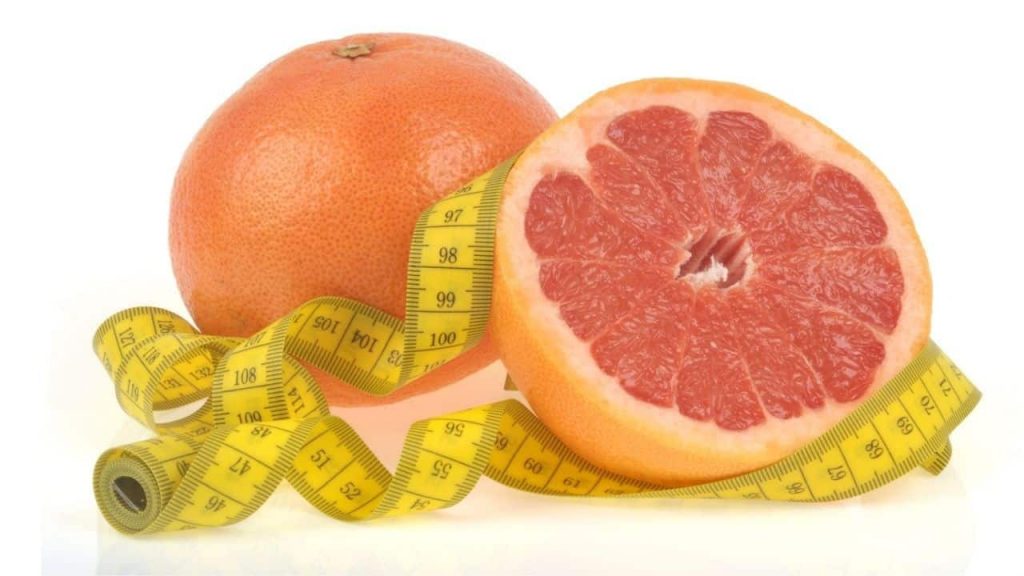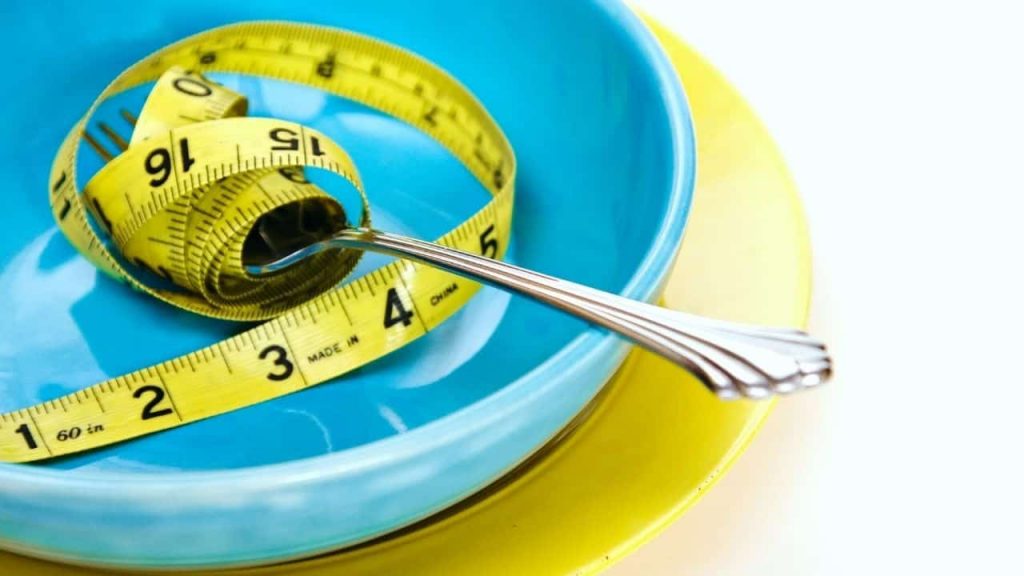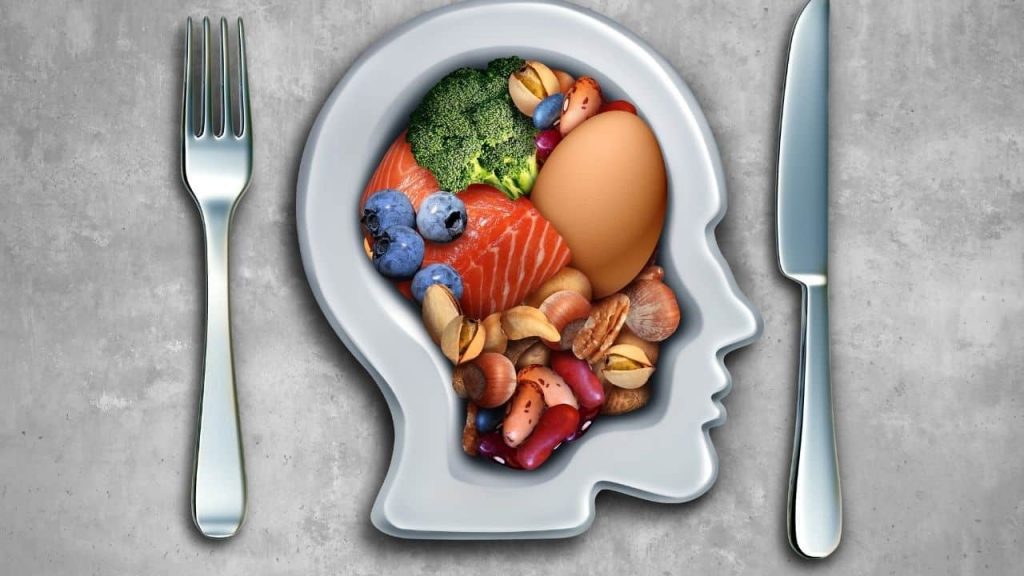It’s a good thing we aren’t actually what we eat because we humans have followed some pretty crazy diets over the years. And not just recently… The control of the self through controlling one’s food intake is millennia old.
Kashrut, the body of Jewish dietary laws derived from the Books of Leviticus and Deuteronomy. It prohibits the consumption of animals that don’t chew the cud. Also, animals without cloven hooves, birds of prey, reptiles, aquatic animals that don’t have fins, and nearly every kind of insect.
Catherine of Siena was one of the 36 Doctors of the Catholic Church. It gained notoriety for her willingness to eat the boils off beggars’ arms and her inability to digest any food besides the Eucharist.
American minister and health reformer Sylvester Graham developed a specially designed wheat-based diet. It was meant to curtail the sexual urges created by caffeine and animal products such as meat and milk. (Dude also invented the graham cracker. Which, ironically, goes great with milk.)

Thanks to an advertising and public relations revolution, the past 100 years have seen every manner of quack, charlatan. Multinational corporations are urging us to follow innumerable new-fangled and faddish dietary methodologies to achieve optimal health.
Only a handful of these diets are outright dangerous. Most are marginally effective and operate on the same “some kind of routine is better than nothing” principle that keeps poorly constructed exercise programs in circulation. In other words, for as long as we need self-discipline, we’ll continue turning to cure-all diets to keep ourselves in line.
Here is an overview of what works, what doesn’t, and what’s still worth a laugh or two.
Robert Atkins suffered a heart attack in 2002 before dying a year later following a bad fall. Comedians and critics had a field day with Atkins’ relatively early death (he was only 72). Still, Atkins’ supporters insist that his long history of heart problems was due to a “documented viral infection.”
The Grapefruit Diet

What it is
The Grapefruit Diet, known alternatively as “The Hollywood Diet” and the “Mayo Clinic Diet,”. It is based on the as-yet unsubstantiated claim that the grapefruit contains an enzyme that can help burn fat.
People following the diet eat grapefruit in conjunction with coffee, tea, and high-fat, high-protein foods. Simultaneously, reducing their consumption of additional fruit, sugar, bread and cereals, and sweets.
Does it work?
Like other low-carb, low-calorie diets, the Grapefruit Diet does seem to promote weight loss when followed. Still, it suffers from the same problems as all other fad diets… It rules out necessary food groups.
It allows for seemingly unlimited consumption of certain unhealthy foods. Also, it forces dieters to abide by stringent and seemingly arbitrary rules (“10 days on, 2 days off”).
Although the grapefruit’s fat-burning properties remain untested, research has shown that it can interact negatively with many different medications.
Fun fact
The Mayo Clinic Diet is not approved by or at all associated with the Mayo Clinic, which has published its own much more reasonable guide to healthy eating.
More: The Foods You Need To Avoid if you want more Energy
The Macrobiotic Diet

What it is
There have been many different versions of this diet. The first dates back to 1797 but, nearly all of them involve heavy consumption of unrefined grains along with vegetables and fish.
Following the English translation of George Ohsawa’s bestselling book You Are All Sanpaku, macrobiotics enjoyed a major upsurge in popularity in the US during the 1960s.
Does it work?
Ohsawa invests the diet with great spiritual significance, viewing it as a way to address every manner of physical and mental disorder.
On these grounds, as with other religious claims, it is impossible to verify its merits. Although, one can understand why such a philosophy appealed to a generation of restless young individuals looking for new ways of achieving self-fulfillment.
A balanced microbiotics program that emphasizes consuming whole grains, vegetables, and fish has much to recommend as a dietary regimen. More extreme variants, such as those that allow the dieter to eat only brown rice and water, can result in significant nutritional deficiencies.
Fun fact
C.W. Hufeland, the German physician who coined the term macrobiotics, was also an early proponent of proper mastication:
“He who wishes to live long ought to eat slowly, as our food must obtain in the mouth the first degree of preparation of assimilation affected by its being sufficiently chewed and mixed with saliva.”
A century later, lecturer and fitness enthusiast Horace Fletcher argued that his “Fletcherizing” method of thoroughly and vigorously chewing everything, even water, gave him the ability to perform tremendous feats of strength well into old age.
More: All You Need To Know About Manuka Honey
The Doctor’s Quick Weight Loss Diet

What it is
Irwin Stillman’s diet prescribed a regimen of six small meals, usually of lean meat and fat-free cottage cheese, and eight glasses of water. The diet was a big hit during the late 1960s and early 1970s and can be seen as a predecessor to programs like the Atkins Diet.
Does it work?
Like most calorie-restrictive diets that prescribe regular small meals, Stillman’s diet should cause the dieter to lose weight if he sticks to the plan.
Stillman’s willingness to allow the consumption of non-fat foods and non-caloric soft drinks (e.g., Tab cola, which allowed users to “keep tabs on their weight”) reflects the fact that these food variants, many of which had just been developed by multinational corporations eager to cash in on America’s burgeoning mania for weight loss, were rapidly gaining in popularity.
Not all physicians and nutritionists remain sold on the value of such “reduced” foods, and the debate about the merits of “good fat” continues to rage.
Not-so-fun fact
Singer Karen Carpenter, who along with her brother Richard produced some of the smoothest pop music of the 1970s, used this diet to drop from 150 pounds to 90. Carpenter battled body image problems her entire life and died from anorexia-related heart failure in 1983.
More: The Best Cooking Oils
The Subway Diet

What it is
Jared Fogle, who entered Indiana University with a 62-inch waist, relied on a diet rich in six-inch Subway subs to lose 225 pounds.
Does it work?
Although Subway improved its bottom line by emphasizing Fogle’s fitness transformation, the diet is only as effective as the choices made by Subway patrons. Two six-inch turkey subs on wheat with mustard and loads of vegetables would likely do the trick.
Two meatball subs with double meat and cheese might have adverse consequences. The former certainly worked for Fogle, at least for a time, as he became the company’s face and amassed a $15 million fortune.
Not-so-fun fact
In the wake of Fogle’s involvement in an extremely complicated scandal involving pornography and cash-for-sex, Subway recently severed all ties with the pitchman.
The Twinkie Diet

What it is
Kansas State University professor Mark Haub lost 25 pounds in three months by following a 1,800 calorie diet consisting of Twinkies, Oreos, and Doritos.
Does it work?
Haub reported lower bad cholesterol and decreased body fat. Although he doesn’t recommend that others attempt to replicate his feat, he emphasizes the importance of portion control and calorie counting.
Fun fact
A dispute between Hostess and the Bakers Union led to Hostess’s shutdown in late 2012. Twinkie production temporarily ceased. After another multinational corporation purchased the bankrupt Hostess Brands, the Twinkie returned to store shelves in July 2013.
The current version of the Twinkie is somewhat lighter than the ones Haub consumed, both in size (38.5 grams versus 42.5) and in calories (135 versus 150). And unlike the pre-2013 version, these new Twinkies are made by non-unionized workers.
The Master Cleanse

What it is
An extremely taxing juice fast developed in the 1940s and re-popularized during the late 1970s. The Master Cleanse is a multi-day program with fasters subsisting on lemon juice mixed with maple syrup and cayenne pepper.
Each morning and night, the diet is supplemented with laxative tablets or saltwater flushes. The aim is to “detoxify” the body, although such claims have little scientific merit.
Does it work?
Yes, in the same way that any extremely low-calorie diet coupled with significant laxative usage will. Master Cleanse fasters report considerable weight loss during the fasting period.
However, much of this is likely water weight that will quickly be regained when the fast ceases. If followed well beyond the recommended period, the Master Cleanse might significantly lose muscle mass and various heart problems.
Fun fact
Bizarre fad diets like the Master Cleanse recall a prior era of American quack medicine when athletes routinely trained for sporting events by consuming emetics and laxatives in considerable volume to purge impurities from their bodies.
Nineteenth-century heavyweight boxer John Heenan was so exhausted from all the emetics he had been taking to deal with an abscess that, despite initially having the upper hand against world champion (and future New York Congressman) John Morrissey, he passed out in the center of the ring during the eleventh round. But Heenan had the last laugh:
When Morrissey retired to enter politics, Heenan simply claimed the world title anyway.
The Paleo Diet

What it is
Though variants of the paleo diet have been around since the 1970s, the recent upswing in the diet’s popularity can be traced to Loren Cordain’s book The Paleo Diet and its subsequent adoption by the CrossFit community.
“Going paleo,” as adherents call it, consists of following a diet that allegedly mimics that of ancient hunter-gatherers: lots of fatty meats and non-starchy vegetables, not so many dairy products and bread.
Does it work?
Several prominent CrossFitters swear by the diet. It is undoubtedly an improvement over the high-carb, low-everything else diets that most Americans follow, but few claims based on evolutionary determinism, including those involving sexual selection, have withstood careful scrutiny.
Fun fact
Evolutionary biologist Marlene Zuk finds the claims that humans were specifically adapted to a Paleolithic diet to be utter rubbish.
She points out that certain populations have developed the ability to digest lactose (the sugar found in milk and other dairy products) as recently as 5,000 years ago, suggesting that humans continue to evolve to suit their changed circumstances.
Noted powerlifting coach Mark Rippetoe has little use for the diet either, believing that a gallon of milk a day is the cheapest mass-building program for a novice trainee.
The Atkins Diet

What it is
The Atkins Diet emerged from research done in the late 1950s by physician Alfred Pennington. Robert Atkins, a physician who used Pennington’s conclusions to lose weight during the early 1960s, would go on to popularize the diet in a series of best-selling books published from the 1970s until he died in 2003.
The Atkins Diet benefits from its relative simplicity, restricting net carbohydrates through the consumption of high-fiber vegetables (the amount of the fiber is subtracted from the total carbohydrates) and various types of meat.
Does it work?
The Atkins Diet works by denying the body carbohydrates and forcing it to rely on fats as a primary fuel source, which does indeed appear to induce weight loss.
Critics have charged that the diet is expensive, at least compared to the extremely cheap carbohydrate-laden treats preferred by many Americans. Remaining totally carbohydrate-deprived for too long can have negative long-term effects.
Fun fact
Robert Atkins suffered a heart attack in 2002 before dying a year later following a bad fall. Comedians and critics had a field day with Atkins’ relatively early death (he was only 72).
Still, Atkins’ supporters insist that his long history of heart problems was due to a “documented viral infection.” New York Mayor Michael Bloomberg was among those who doubted that explanation, candidly remarking how “[Atkins] was fat” and claiming he didn’t “believe that bull, that he dropped dead after slipping on a sidewalk… yeah, right.”
The South Beach Diet

What it is
Cardiologist Arthur Agatson created the South Beach Diet, its catchy brand name derived from Agatson’s work at a medical center in Miami.
Agatson’s program consists of multiple stages and relies on a variety of methods employed by other diets: leaner meats, high-fiber vegetables, and the consumption of “good” monosaturated fats, all of which together will reduce hunger (there’s no specific calorie cap, but Agatson claims dieters eating these foods won’t feel as hungry).
Does it work?
Critics pointed out that many of Agatson’s claims were overstated. Still, in the main, his blood stabilizing-based approach to controlling consumption has its merits.
As with many of these diets, it certainly worked to increase its chief architect’s personal wealth: as of 2005, Agatson was worth almost $20 million.
Fun fact
South Beach has long been the most gay-friendly part of Miami Beach, with the LGBT community largely responsible for the gentrification of an area that had experienced a significant economic decline during the 1960s and 1970s.
The Zone Diet

What it is
Biochemist Barry Sears ostensibly developed the Zone Diet, a somewhat scaled-down (you eat five times a day because you have five fingers, duh!) but still a rather technical low-carbohydrate diet to avoid dying of a heart attack like most of his male relatives had.
The Zone Diet uses many of the same principles as the other fad diets on this list—eating low glycemic index foods, eating lots of fiber and meat to decrease hunger—but couples them with a lot of jargon about “Zone blocks” and “mini-blocks.”
Does it work?
Sears’ more controversial claims about the “connections between diet, endocrinology, and eicosanoid metabolism” have been questioned by researchers. However, as with most of these programs, following some kind of eating regimen is almost assuredly better than nothing at all.
Fun fact
Much of Sears’ recent writing has been about the health benefits of fish oil, a supplement whose virtues have been extolled by everyone from Arnold Schwarzenegger to Dr. Phil.
However, the largest clinical trial involving fish oil found absolutely no evidence that it lowers heart attack or stroke risk.
Comedians Tim Heidecker and Eric Wareheim released their own Zone Theory: 7 Steps to Achieve a Perfect Life a couple of years ago.
It remains to be seen whether Sears, who was involved in significant litigation during the 2000s with a bunch of soundalikes “Zone” health bar-producing companies, will also sue them.
USDA MyPlate

What it is
MyPlate is the government-produced successor to those food pyramid diagrams that used to hang in elementary classrooms all over America.
Abstract and slightly confusing—what if you, like me, eat off giant-sized pizza stones instead of plates?—MyPlate nonetheless provides a very basic way of understanding how to prepare simple and somewhat nutritious meals.
Does it work?
When considered in conjunction with supplementary USDA guidelines about eating whole instead of refined grains and drinking skim milk, sure, it undoubtedly works.
Like most meatheads in search of an edge, I’ve cycled on and off most of these dietary regimens.
I avoided the Master Cleanse because I’m simply not willing to handle that much syrup juice and all those laxatives and the Zone Diet because it seemed like a lot of gibberish, but having a nutrition program to follow, particularly if you’re not 100 percent wedded to it, at least gives you something to think about when you’re preparing your meals.
And USDA’s MyPlate, for all its flaws, is as good as anything that’s out there (the Harvard Healthy Eating Plate is even more useful).
Fun fact
Ayn Rand-obsessed bodybuilder Mike Mentzer, who had one of the best physiques of the early 1980s, disdained fad diets and protein overconsumption.
He argued in his book High-Intensity Training that “a well-balanced diet is composed of 60 percent carbohydrates, 25 percent proteins, and 15 percent fats, with the foods derived from the four basic food groups: meats, fruits and vegetables, dairy products, and grains and cereals”—in other words, the original food pyramid.
For him, as for Mark Haub of Twinkie Diet fame, the key was to monitor calories: “If you require 3,000 calories a day to maintain your weight and all of a sudden you reduce to 2,000 calories, you’ll lose fat.
” His opinion, like Haub’s, was that “a calorie is a calorie, no matter the source.”
Table of Contents